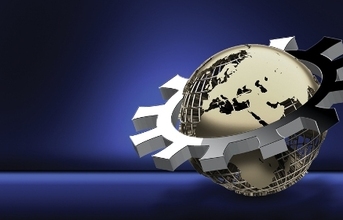
CII has analyzed and identified select export items where India can become a leading exporter and offers recommendations for boosting such products,” said Chandrajit Banerjee, Director General, CII.
The Confederation of Indian Industry (CII) has identified 31 items with high potential for exports in a new study on boosting merchandise exports. The identification of the products comes in the light of moderating export growth in the first quarter of 2019-20 as a result of global trade developments. Items in the list include women's apparel, drugs, cyclic hydrocarbons, and furniture, among others.
"A targeted export strategy that identifies and boosts the right products is imperative for achieving double digit export growth. An export strategy assumes greater significance given a rapidly changing global trade landscape, shifting of global value chains and new free trade agreements, including mega trade agreements. CII has analyzed and identified select export items where India can become a leading exporter and offers recommendations for boosting such products," said Chandrajit Banerjee, Director General, CII.
In a research paper, "Indian Exports: The Next Trajectory - Mapping Products and Destinations", CII has suggested a double-pronged approach of expanding domestic production and undertaking targeted promotion in top importing nations to build exports in these items.
To encourage domestic manufacturing, CII calls for strengthening industrial clusters with related infrastructure and port connectivity. Adopting an integrated value-chain approach for establishing global linkages is another important recommendation which would require interventions such as logistics and infrastructure support, skill development initiatives, and creating awareness for better understanding of GVCs, among others.
Trade and investment agreements and an infrastructure for promoting standards and certifications are needed, said CII. Incentives to encourage greater adoption of technology and innovation and boosting high-tech exports are also suggested. A key recommendation is the need for developing an export strategy at the state level, based on states' comparative advantages.
The paper employs a dual identification strategy of shortlisting top imports of the top importing nations. These products at the HS 4-digit level are mapped with India's current export profile for determining its export competitiveness to these top importing nations. Four criteria are considered - the total exported value of products, world export shares, India's rank as a top exporter in the top import items and India's frequency as a top exporter among those top imports.
After applying these filters, 31 products are identified. In ‘Achievers' where India has a strong footprint, the categories of women's apparel and medicaments are top products. The ‘Aspirers' category includes cyclic hydrocarbons and furniture, among others which have significant potential. ‘Products where capacities need to be enhanced' include telephone sets, electrical apparatus, motor cars and motor vehicles, etc.
For enhancing the market promotion of the select products, CII recommends that non-tariff barriers must be taken up with the respective Governments of destination countries. Other suggestions include facilitating effective marketing strategies by setting up centres in top international markets, product promotion and integration of brand building initiatives with India's commercial missions.
Given the uncertain global trade climate, India's merchandise exports fell by 1.7% in the first quarter of 2019-20 to $81 billion. In 2018-19, exports expanded by 8.8% to cross $330 billion. India is facing headwinds from ongoing global trade conflicts at a time when some other countries are capitalizing on changing supply chains and the country must step up its export strategy to compete.
END





































